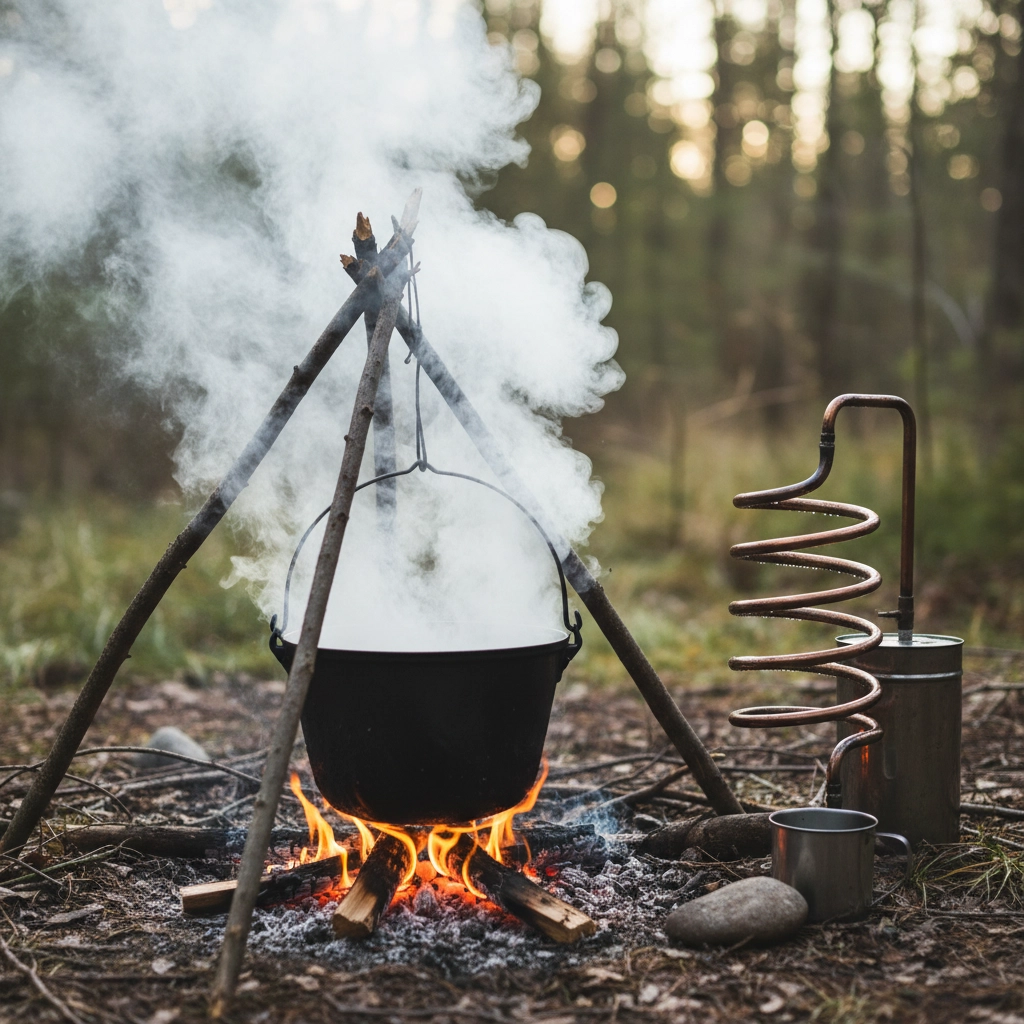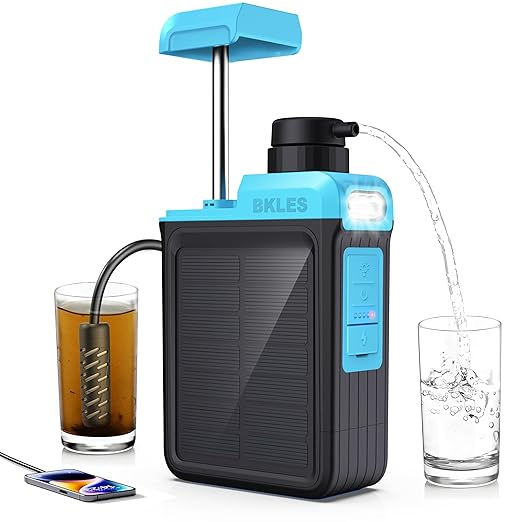The Ultimate Prepper's Guide to Finding, Purifying, and Preserving Water (Expert Skills & Methods)
- Jim R.
- 1 day ago
- 5 min read
References and Sources
This comprehensive guide draws on peer-reviewed research and established protocols from the Centers for Disease Control and Prevention (CDC), the World Health Organization (WHO), the Environmental Protection Agency (EPA), American Red Cross emergency preparedness guidelines, and field-tested methodologies from wilderness survival experts and water treatment professionals.
IMPORTANT DISCLAIMER: This article is for educational purposes only. Water treatment and purification involve inherent risks. Always verify local regulations, test methods with safe water sources first, and consult with water treatment professionals when possible. Prepper Field Guide assumes no responsibility for outcomes resulting from the application of these methods. Use all techniques at your own risk and exercise sound judgment in emergencies.
As an Amazon Associate, I earn from qualifying purchases. This post may contain affiliate links, which means I earn a commission if you purchase through my links, at no extra cost to you.
Why Water Mastery Defines Survival Success
Water security separates prepared families from vulnerable ones when a crisis strikes. While the average person can survive only three days without water, those who master finding, purifying, and preserving this essential resource can extend their survival indefinitely.
Understanding water procurement isn't just about emergency scenarios. Off-grid living, natural disasters, infrastructure failures, and extended camping all demand these critical skills. This guide provides the exact measurements, proven techniques, and expert-level knowledge that transform water anxiety into water confidence.
Finding Water Sources: Beyond the Obvious
Natural Water Detection
Successful water location begins with reading environmental signs. Follow animal trails downhill, as wildlife requires daily access to water. Look for green vegetation in otherwise dry areas, indicating subsurface moisture.
Birds flying in straight lines during early morning or late afternoon typically head toward water sources. Converging animal tracks often lead to reliable watering spots.
Urban Water Sources
City environments offer hidden water opportunities during emergencies. Water heaters contain 30-80 gallons of potable water accessible through the drain valve. Toilet tanks (not bowls) hold clean water suitable for purification.
Swimming pools offer a substantial volume but require extensive maintenance and treatment. Rainwater collection from clean roof surfaces offers a renewable supply during precipitation events.
Underground Water Indicators
Dig in dry creek beds, particularly where the channel curves outward. Water often flows underground even when surface flow stops. Collecting morning dew using an absorbent cloth can yield surprising quantities in arid environments.
Water Quality Assessment: Know What You're Dealing With
Visual Inspection Protocol
Clear water isn't necessarily safe water, but cloudy water definitely requires treatment. Look for oil sheens, foam buildup, dead vegetation, or animal carcasses upstream. These indicate contamination requiring advanced purification.
Check for unusual colors (green suggests algae, brown indicates sediment or organic matter, red may signal iron or other minerals). Note any chemical odors that might indicate industrial contamination.
Basic Field Testing
This 21-in-1 Home Drinking Water Testing Kit provides immediate contamination assessment. Test pH levels (safe drinking water ranges 6.5-8.5), chlorine residuals, and basic bacterial indicators.
Temperature readings above 70°F increase bacterial growth rates, requiring more aggressive treatment protocols.
Chemical Purification: Exact Dosages That Save Lives
Household Bleach Treatment
Use only unscented liquid chlorine bleach containing 5.25-6% sodium hypochlorite. Never use bleaches with colorants, fragrances, or cleaning agents.
Exact Dosage Protocol:
Clear water: 6 drops per gallon (1/8 teaspoon per gallon)
Cloudy water: 12 drops per gallon (1/4 teaspoon per gallon)
Mix thoroughly and wait 30 minutes. Water should have a slight chlorine odor after treatment. If no odor is present, repeat the dosage and wait an additional 15 minutes.
Iodine Purification Measurements
These Primal Survival Water Purification tablets provide reliable chemical disinfection. These can treat 4 gallons of water in 30 minutes.
Temperature-Based Dosing:
Water above 70°F: 1 tablet per liter, 30-minute contact time
Water 50-70°F: 1 tablet per liter, 60-minute contact time
Water below 50°F: 2 tablets per liter, 60-minute contact time
Cloudy or cold water requires double the dosage. Pregnant women and individuals with thyroid conditions should avoid iodine treatment.
Calcium Hypochlorite (Pool Shock)
This In The Swim Pool Shock creates massive disinfection capacity from minimal storage space. Use only products containing 65-70% available chlorine.
Stock Solution Preparation:
Dissolve one teaspoon of calcium hypochlorite in 1 gallon of water
Mix in a well-ventilated area (avoid inhaling fumes)
Store solution in a cool, dark location
Treatment Dosage: Add 1 part stock solution to 100 parts water (approximately 1.5 ounces stock solution per gallon). Wait 30 minutes before consumption.
Physical Purification Methods
Boiling: The Universal Standard
Boiling eliminates virtually all pathogens when performed correctly. Bring water to rolling boil for minimum 1 minute at sea level. Add 1 additional minute for every 1,000 feet above sea level.
High-altitude adjustments are critical because water boils at lower temperatures as elevation increases, reducing pathogen kill rates.
Distillation Setup
This Kitchen Crop Little Creek Stainless Steel Water Distiller removes chemicals, heavy metals, and salts that other methods cannot address. Create an emergency distillation using a large pot, a heat-resistant bowl, and a curved lid.
Place the staking pots according to the instructions in the kit, add contaminated water, and invert the lid so that the condensation drips into the bowl. Maintain a gentle boil for maximum efficiency.
Advanced Water Preservation Techniques

Long-Term Storage Protocols
Use only food-grade containers made from high-density polyethylene (HDPE) or glass. Avoid containers that previously held non-food products, as plastic can absorb and leach contaminants.
Storage Preparation Steps:
Sanitize containers with bleach solution (1 tablespoon per gallon of water)
Rinse thoroughly with clean water
Fill to minimize air exposure
Add 2 drops of liquid bleach per gallon for preservation
Seal tightly and label with the storage date
Rotation and Maintenance
Replace stored water every 6 months at the maximum, even when it is properly treated. Rotate stock using "first in, first out" principles to maintain freshness.
Check containers monthly for signs of cracks, leaks, or contamination. Store in cool, dark locations, away from toxic materials such as gasoline, pesticides, or solvents.
Emergency Water Quantity Planning
Calculate a minimum of 1 gallon per person per day for drinking and basic hygiene. Increase to 2-3 gallons daily in hot climates or high-activity situations.
Containers of various sizes allow flexible storage configurations. I recommend 5-gallon stackable containers. Maintain a minimum 2-week supply per household member.
Specialized Scenarios and Solutions
Cold Weather Considerations
Freezing temperatures create unique challenges. Insulate storage containers and consider alcohol addition (1 tablespoon per gallon) to lower the freezing point without affecting potability.
Snow and ice provide excellent water sources but require significant energy to melt. Melt gradually to conserve fuel and prevent scorching containers.
Desert Environment Strategies
This 3-in-1 solar electric water filter utilizes UV radiation for pathogen elimination in sunny conditions. Fill clear plastic containers and expose to direct sunlight for 6-8 hours.
Dew collection using tarps or plastic sheets can yield substantial quantities during periods of temperature differential. Set up collection surfaces before dawn for maximum efficiency.
Quality Control and Safety Verification
Always test purification methods with known safe water before relying on them during emergencies. Keep backup purification options available, as a single-method dependency creates dangerous vulnerabilities.
Document successful techniques and dosages for your specific equipment and local water conditions. Practice regularly to maintain proficiency and identify potential problems before they become critical.
Water security forms the foundation of all preparedness planning. Master these techniques now, practice them regularly, and maintain proper supplies to ensure your family never faces water scarcity regardless of circumstances. For additional survival skills and preparedness strategies, explore our comprehensive guides at Prepper Field Guide.
Tags: water purification, emergency water, survival skills, prepper essentials, water storage, chemical treatment, water filtration, emergency preparedness, off-grid living, disaster planning







Comments